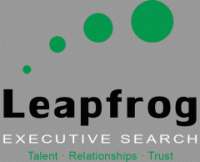Brand Consistency
Category : 2019
From McDonald’s to 7-Eleven to KFC to Ace Hardware, the biggest franchise companies in the world have one thing in common. Across their combined 175,000 outlets globally these companies want consistency. Every successful franchisor has a model they believe works, and they exert tremendous effort to ensure franchisees don’t wander from the established path. While Chick-fil-A doesn’t make the top of the list by size, they generate more profit per restaurant than any other franchise-by providing great food, hiring the nicest high school kids on the planet, and training everyone to say, “My pleasure,” in the place of “No problem,” every time they are thanked.
In marketing, brand consistency ensures a company’s message, logo, typeface, and colors are the same everywhere, every time. The style of a brand makes it readily recognizable and separate from competitors. Think Google, Amazon, Coca-Cola, and Starbucks.
In a larger sphere, consistency ensures the customer’s experience and the results of the business are aligned with the values, messages, purpose, and perception of a brand. An executive’s brand consistency is as important as consistency across any business. Executive brand consistency grows from authenticity-being who you are and what you are day after day after day. When talking about consistency in 22 Immutable Laws of Branding, Al & Laura Ries put it simply, “Success is measured in decades, not years.”
Consistency is more about being reliable than being radical. Some brands have ventured into the uncharted waters of brand expansion with dismal results.
- In the 1990s Harley Davidson learned men’s cologne with, “The crisp top notes of bergamot, pineapple, apple, lavender, and cypress [and] an almost mossy undertone” that’s “Perfect for the well-dressed businessman,” may sound appealing . . . but not coming from a motorcycle manufacturer. That product venture met a quick demise.
- After serving the elite of England for over 200 years, Yardley of London thought a new marketing push with Linda Evangelista in chains and handcuffs would position Yardley products for a younger audience. The effort didn’t capture the intended audience and alienated the established customer base of white-haired ladies, putting the company in receivership.
- Planet Hollywood painfully discovered that names like Bruce Willis, Arnold Schwarzenegger, Sylvester Stallone, and Demi Moore couldn’t compensate for a brand that didn’t capture the market or compete in the over-crowded restaurant space.
Whether sitting around the table of an executive board room or sitting on a stool at Wendy’s, people judge a brand in seconds. Like it or not, those judgments create perceptions and perceptions drive decisions. As Matt Haig points out in Brand Failures, “Consumers make buying decisions around the perception of the brand rather than the reality of the product. While this means brands can become more valuable than their physical assets, it also means they can lose this value overnight.”
How can an executive develop brand consistency?
Extend your influence by limiting your focus.
When you have Amazon’s money you can dabble in anything you want to try. Until you have Jeff Bezos’ R&D budget, build your brand around your strengths, not your prospects. By the time someone moves into an executive role, their brand is built around what they can deliver dependably. These execs complement their strengths with team members who ably fill gaps in the leaders’ personal repertoires. Whether turnarounds, optimization, supply chain, organizational alignment, or other complex challenges, executives with brand consistency build results on a solid platform of self-awareness. Unbridled optimism is highly motivating-and expensive. Eighty-nine percent of small business owners believe they can do anything they set their minds to do. Seventy-six percent of their companies fail due to their incompetence or lack of the right expertise.
Create opportunities by innovating.
While an executive should leverage his or her strengths, career longevity demands that the executive leverage those strengths to bring innovation to his/her sphere of influence. Any executive that isn’t committed to personal innovation around areas of proven expertise is will soon be eclipsed by leaders who aren’t afraid of either progressive or disruptive change. Building new business models that engage disruptive technologies, using AI and big data to get closer to the customer, and creating a working environment that captures the interest and motivation of a changing workforce are three open fields inviting executive innovation.
Avoid measuring what doesn’t matter.
Repeatedly delivering measurable results against promises made is foundational for brand consistency. That is unless the results are in areas that are irrelevant to the Board, produce little impact on critical business drivers like cash flow and profitability, or take energy and time the CEO is convinced should go in another direction. Consistent brands deliver results to the numbers that matter.
Listen to people who have done it.
Search Google for an answer to “how to be more consistent” and you get 522 million entries. Not all of those are worth your time . . . Saying, “Consistency is the enemy of enterprise, just as symmetry is the enemy of art,” makes for great prose, and reveals what little playwright and critic George Bernard Shaw understood about business. A statement about consistency from Shaun White, a three-time Olympic medalist that achieved two perfect scores carries a bit more weight than Khloe Kardashian telling people to “start somewhere.” Find leaders delivering consistency and ask them how they do it. Take their principles without attempting to mimic their success. We never outgrow the need for a mentor. The person who can best contribute to your future achievement may be someone younger than you.
Is ensuring brand consistency worth the investment? McDonalds estimates they sell 550 million “two all-beef patties, special sauce, lettuce, cheese, pickles, onions – on a sesame seed bun” annually. That’s a $3.99 Big Mac going out the door somewhere every 17 seconds. Deliver consistency to your customer and consistency will deliver for you.
